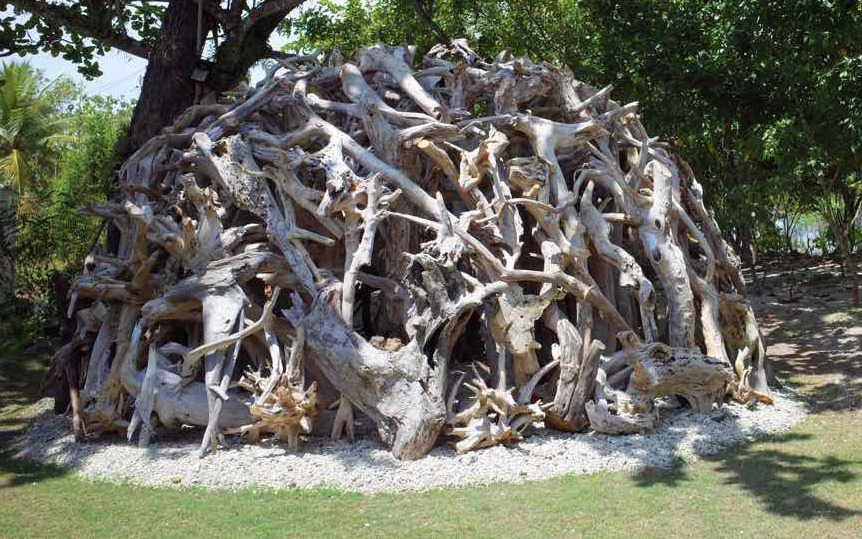
Earth Mounds
Bernardo Pacquing
Lubi Plantation, Kopiat Island, Davao
Videos
About
SILVERLENS is pleased to announce "Earth Mounds" by Bernardo Pacquing. This is the first installation at the Art Island Project located in the southern Philippines. Pacquing will be doing a 2nd much larger piece in the 1st quarter of 2019. Lubi Plantation, Kopiat Island, will open to the public in December 2018.
Earth Mounds
Bernardo Pacquing
2018
I have always been fascinated by domes. Whether made by man or nature, their architectural detail and structural engineering thrills me – the huge basilicas, the cupolas, the stupas, the igloos, and not discounting the heights and depths of termite mounds.
One cannot help but be overwhelmed when trying to grasp how these humongous termite mounds are far more intricate in structure, and far more impressive particularly when compared to existing human: construction scale.
In 2010, I had a one-man show entitled ‘Earth Mounds’ showcasing my awe and appreciation of domes through paintings, collages, sculptures, and installations. Exploring different materials I was able to build differently composed and sized domes out of wood, medium density fiberboard (MDF) and cardboard.
I continued responding to the challenge of creating domes though this time, in a different context and conditions. Still impressed by scale and detail of nature-molded mounds, I wanted to build an equally imposing structure while confining self to what the outdoor location could generously offer – driftwood.
With their odd shapes and complex forms, I was determined to build a 10-foot high x 20-foot diameter dome. This time the challenge was to compose, fit/refit and connect each and every joint using only brass rods held in place by adhesive.
The joinery work was crucial since my intention was to create structural integrity that would accommodate the weight of a full grown man should he decide to climb to the top of the sculpture. Using half lap and mortise and tenon joints, I succeeded in what I sought to do.
Aside from making sure of the soundness of the structure, identifying and composing the driftwood towards a pre-determined aesthetic was another hurdle. As found objects, not all driftwood would look right when I started fitting them together. Complicating matters would be my intention to make the sculpture exude visual balance from all viewing angles and distances.
A delicious irony comes from my inspiration, which is the architectural and construction genius of termites and the fact that termites abound in the locality; they could very well be the cause of my work’s destruction.
Bernardo Pacquing continues to approach the expressive potential of abstraction in painting and sculpture through the use of disparate found objects that confront and disrupt perceptions of aesthetic representation, form, and value. By focusing on the organic shapes of visual reality, his work displaces notions of indisputable forms and opens possibilities for coexisting affirmations and denials.
Pacquing was born in Tarlac, Pampanga in 1967. He graduated from the University of the Philippines College of Fine Arts in 1989 and was twice awarded the Grand Prize for the Art Association of the Philippines Open Art Competition (Painting, Non- Representation) in 1992 and 1999. He is also a recipient of the Cultural Center of the Philippines Thirteen Artists Award in 2000, an award given to exemplary artists in the field of contemporary visual art. Pacquing received a Freeman Fellowship Grant for a residency at the Vermont Studio Center in the United States.
